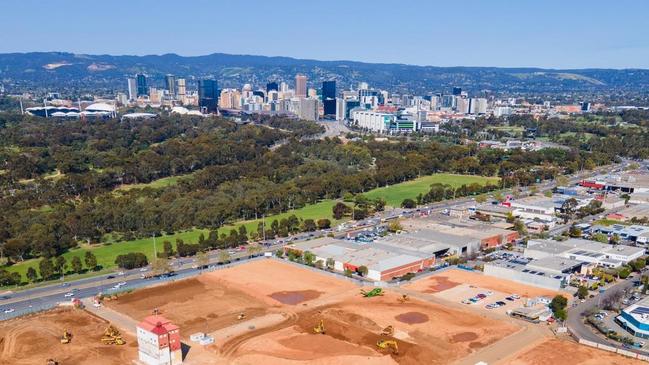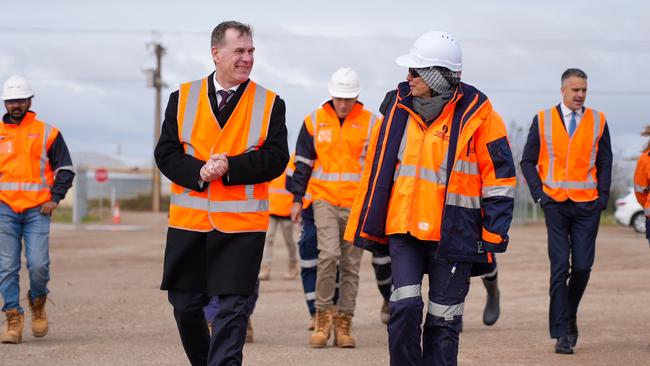SA construction industry warning on new Adelaide housing plan
Construction industry leaders fear infrastructure, which is already holding back new housing development, will only get worse in the new Adelaide growth plan.
SA News
Don't miss out on the headlines from SA News. Followed categories will be added to My News.
Construction industry leaders fear the lack of water pipes, roads and sewage networks already holding back the state’s escalating housing needs will only get worse in the latest Adelaide growth plan.
In reaction to the State Government’s draft Greater Adelaide Regional Plan released this week, Housing Industry Association SA director Stephen Knight said vital new infrastructure like roads and sewers were already “lagging behind”.
Now industry will “have to pick up the shortfall and then do much more if we are to meet predicted demand for housing”, he said.
The plan forecasts 315,000 new homes will be needed by 2051 meaning an average 12,115 dwellings would have to be built each year. Target growth areas include Murray Bridge and the northern suburbs as the plan shelves the current urban growth boundary.
“A quick comparison with the 2010 and 2017 update of the 30-Year Plan for Greater Adelaide has thrown up a major revision on population growth and housing numbers targets,” Mr Knight said.
In 2010 the number of dwellings forecast to be required on average per year to 2036 was 9,923, and in 2017 this was revised down slightly to 9538 up until 2045.
“(It’s) clearly a much higher target,” Mr Knight said.


“Infrastructure delivery has struggled to keep up with the forecasts set around 15 years ago and in fact have fallen behind.”
The three key concerns about the plan’s housing projections raised by the Property Council of Australia were infrastructure, certainty and speed.
SA executive director Bruce Djite said there needed to be a focus on delivering water, sewers, roads and community facilities to ensure new housing could be built.
However, homeowners were already paying higher water bills to fund water infrastructure to new homes, and Mr Djite wanted to know how projects would be paid for in the future.
“We need certainty that infrastructure will be there … and the speed of planning approvals is addressed,” he said.
“The planning system is not bad as in business-as-usual but what we have now is a housing crisis, the lowest vacancy rates in Australia and lowest affordability.
“Glenside is a good example at the moment where there are a handful of anti-housing campaigners saying 20 storeys is too high (about a project) … we have to get the government to show its commitment.”
The state needed “a mature conversation” about growth, according to Mr Djite, otherwise major projects like the AUKUS nuclear submarine project or other construction plans would struggle to attract workers if they could not find adequate housing.

“If you are an apprentice on an apprenticeship wage, where are you going to live?” he said.
Mr Champion said the government is making “a record $1.5 billion investment in water and sewer infrastructure” in its Housing Roadmap to unlock new greenfield housing sites and future growth.
“We now have a draft plan for growth to prepare for an additional 670,000 people by 2050,” he said.
“If we are to create 315,000 new houses over the next 30 years, we need long-term planning that strikes a balance between strategic infill and greenfield growth.
“The Greater Adelaide Regional Plan will include important factors such as future employment land, public spaces, transport options and supporting infrastructure.”





